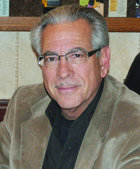
Long-term care providers are nervous. With H1N1 spreading across the country, it is less a matter of “if” and more “when” flu will appear in your facility. And any time you mix flu with a long-term care facility, there is definitely cause for worry.
For years we have been warned that a new global pandemic was coming. Just a few years ago, we were all on alert for the bird flu. Many long-term care providers increased their infection control diligence, but once the threat passed they resumed business as usual. Now that we’re staring H1N1 down, we should take this opportunity to adopt best practices to reduce its impact and put us in a good position to fight the next infection outbreak.
The Centers for Disease Control and Prevention has issued guidelines we should follow to help reduce the spread of H1N1. The vast majority of us are probably already following its ideas. We’ve stocked up on alcohol-based hand cleaners and are being more aware of how often we should be washing our hands. We’re coughing and sneezing into our elbows and not into our hands. When interacting with someone who has H1N1, we might even wear a protective mask to reduce our risk of exposure. But is that all we can do?
As the CEO and second-generation owner of a company that specializes in the design and construction of cleanrooms where the primary emphasis is on controlling airborne particulate matter, I know that if you truly want to prepare your long-term care facility for H1N1, you need to have a two-step plan in place. First, do all you can to keep the virus out of your facility. Second, keep the building’s inside as clean as possible and be ready to control the spread of the virus once it gets in. This two-pronged approach goes far beyond masks and hand wash.
In the cleanroom world, we take a number of steps to prevent contaminants from getting in such wear special clothing, use air showers, shoe cleaners, and adhesive mats to catch the dust, While you probably won’t take such advanced precautions, you should at least be observing people as they enter your facility to make sure that none are exhibiting signs of infection. If they are, you need to ask them to politely leave until they recover.
But what happens when H1N1 gets inside? In an industrial setting, we are very concerned about the way air flows within a cleanroom. For your long-term care facility, you need to be concerned with how the virus could flow throughout your facility. For example, if you have a resident who is showing signs of infection, you need to impede the flow of the virus by creating a quarantine area to help isolate them from the healthier population.
In addition to quarantine, you’ll need to institute a coordinated effort to keep surfaces clean with anti-bacterial, alcohol-based sprays. But one area that most neglect to clean is the air itself! Areas where people congregate, such as dining rooms or social rooms are usually a breeding ground for colds and flu. To clean these areas, you can use an industrial air purifier, such as the NQ Clarifier. In addition to cycling the air through a HEPA filter, the unit uses ultraviolet light to kill bacteria, viruses, fungi, allergens and mold. These units, which can mount either on the wall or sit on the floor, offer an extremely high level of infection control.
While the H1N1 pandemic is a crisis, it is also a learning opportunity. It affords us the chance to put the equipment and procedures in place to make our facilities cleaner and, ultimately, safer. Take steps to reduce the influx of contaminations into your facility through screening and keep the “clean” areas cleaner with quarantine measures, proper anti-bacterial cleaning supplies, and air purifiers. If you start adopting best practices now, not only will you weather the H1N1 crisis, you —and your residents—will be much healthier in the coming years.
John Nappi Jr. is CEO of Liberty Industries Inc., which has manufactured cleanrooms and distributed cleanroom equipment and accessories, including quarantining materials, since 1953. For more information visit www.liberty-ind.com/h1n1.html or call (800) 828-5656, ext. 604.




